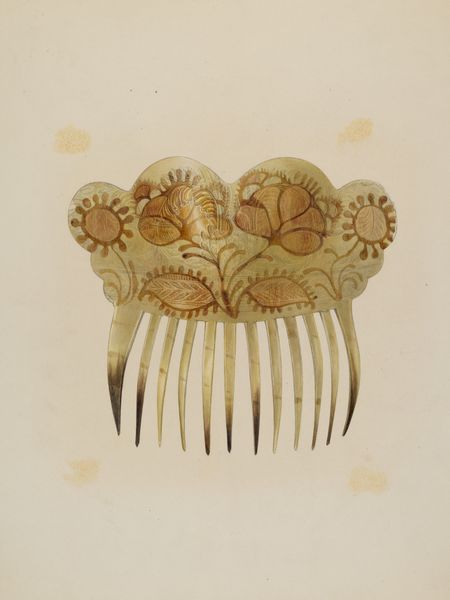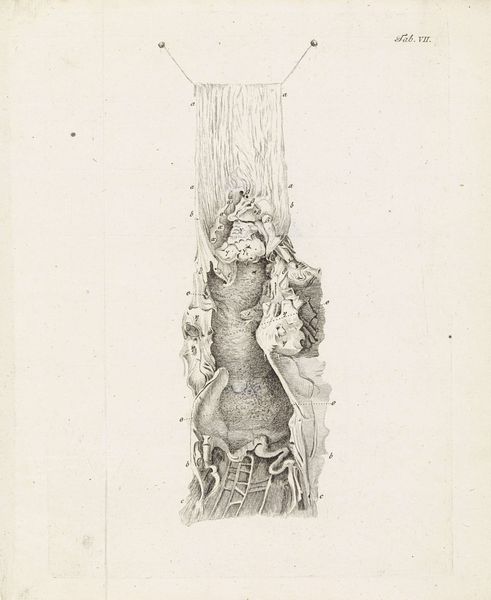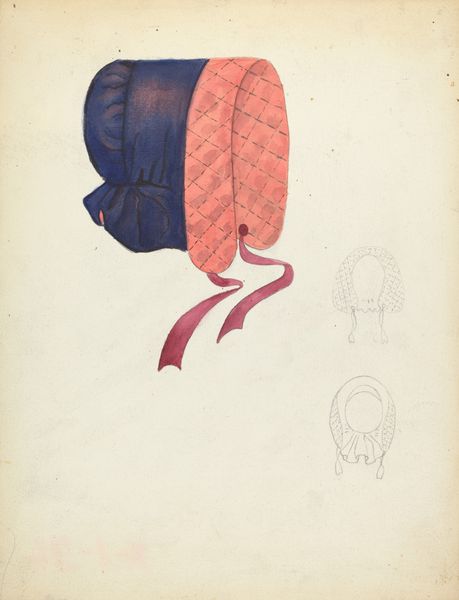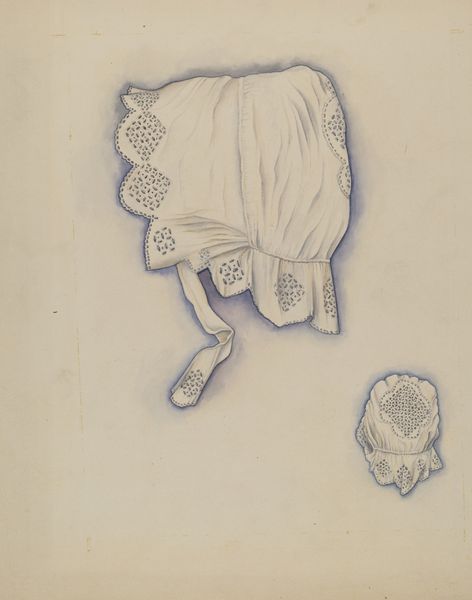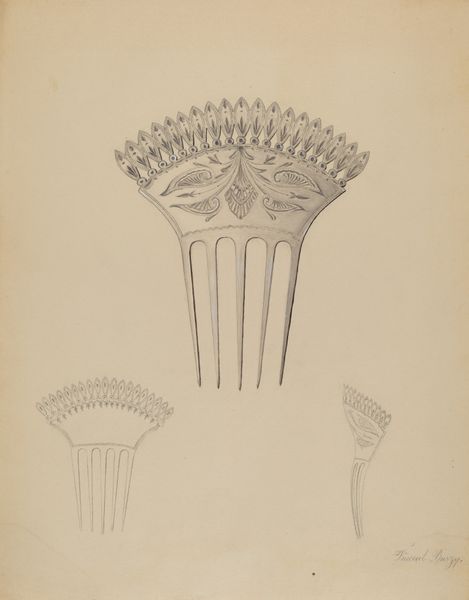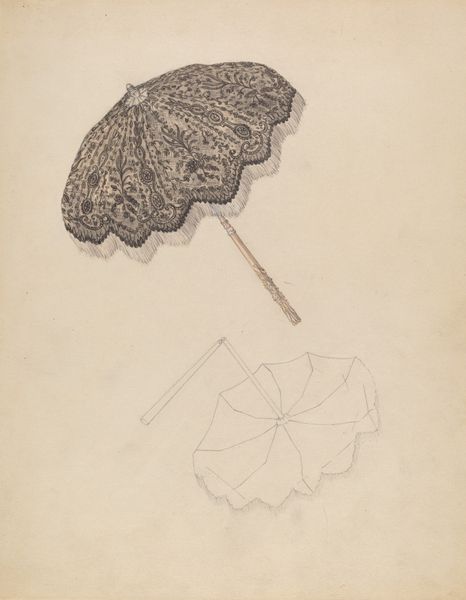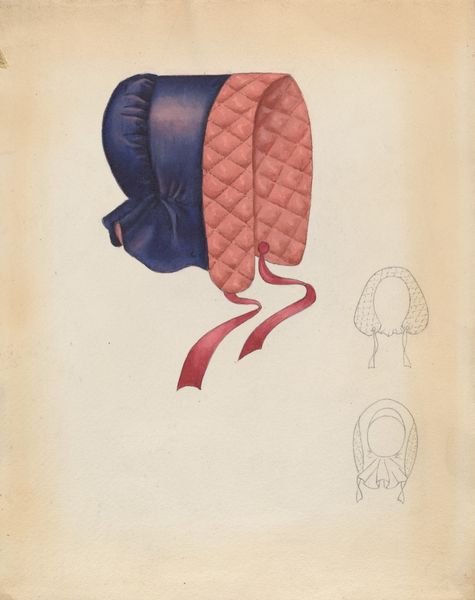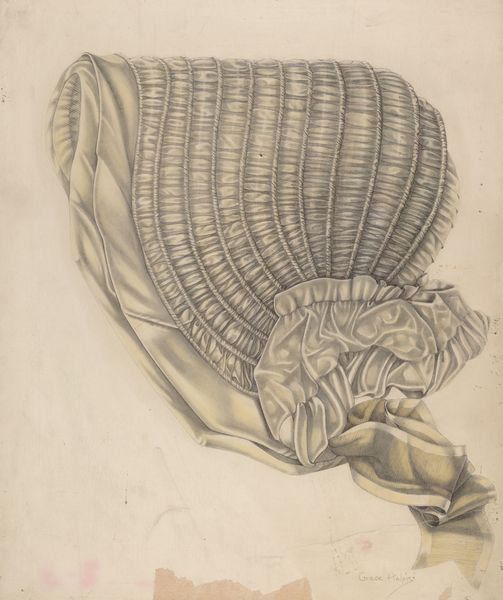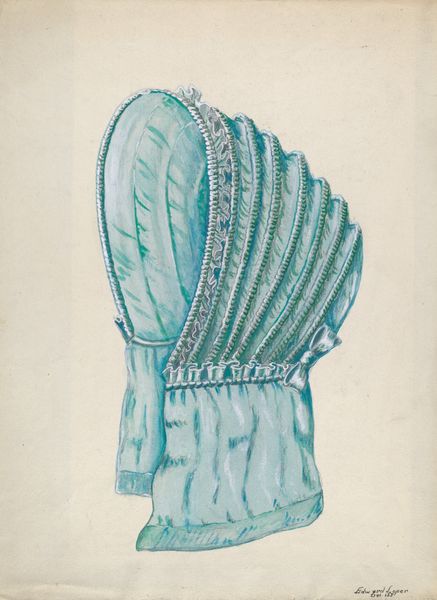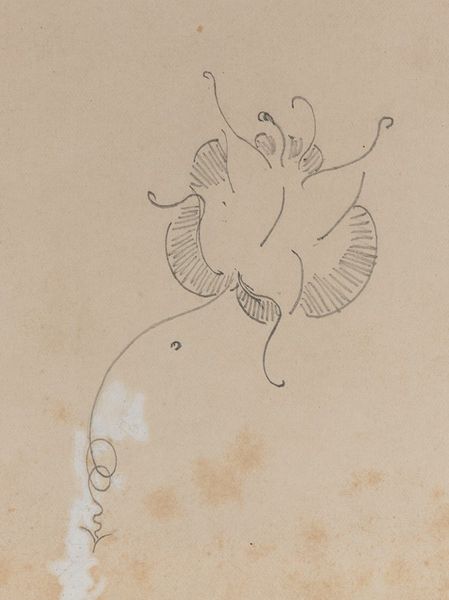
drawing, watercolor
#
drawing
#
figuration
#
watercolor
#
watercolour illustration
#
decorative-art
Dimensions: overall: 36.8 x 22.8 cm (14 1/2 x 9 in.)
Copyright: National Gallery of Art: CC0 1.0
Curator: This is "Comb," a watercolor and drawing by John H. Tercuzzi, created around 1939. It’s a simple object, beautifully rendered. What strikes you first about it? Editor: Well, it feels so delicate, almost like looking at a forgotten artifact. I love the ghostly sketch of a second comb beneath the main image—adds a sense of depth and history, doesn't it? Makes you wonder about the unseen work behind the piece. Curator: Precisely. Tercuzzi's work provides a direct connection to the design processes and materials used in decorative arts. We see how function and ornamentation intertwined, particularly during the late 1930s, influenced, no doubt, by prevailing consumer aesthetics. Editor: It’s more than just function; it’s self-expression captured through something as mundane as a comb. That decorative element transforms it; those stylized flowers in soft reds and oranges breathe life into the otherwise neutral palette. I'm instantly daydreaming about the hand that used it, the scent of hair oil, a vanished world! Curator: Note the craft evident in both the visible design and the obscured form beneath. Tercuzzi’s treatment invites viewers to consider how mass-produced items still carried individualized artistry. The rise of consumerism also elevated the importance of designers and their creations. Editor: And think about it—watercolors allow for a fluidity, a certain impermanence. Maybe that sketch beneath represents not just a design stage but an acceptance of change, that beauty is fleeting. Deep thoughts for a comb, huh? Curator: (Chuckles) Indeed! Yet it also shows how quotidian items reflected a specific cultural and economic milieu. The availability of materials, the purchasing power, everything comes into play when assessing its artistic value. Editor: Value... yes, but its primary value for me lies in its whisper. That connection to human touch, creativity, and history. This little watercolor doesn’t shout, but hums. I can feel my mind quiet down when looking at it, I almost feel at peace, and perhaps a little bit more patient. Curator: It certainly illustrates how, through examining even the simplest objects, we reveal broader truths about creativity and consumer culture. Editor: And it reminds us of beauty hidden in the ordinary! What a sweet little object.
Comments
No comments
Be the first to comment and join the conversation on the ultimate creative platform.
